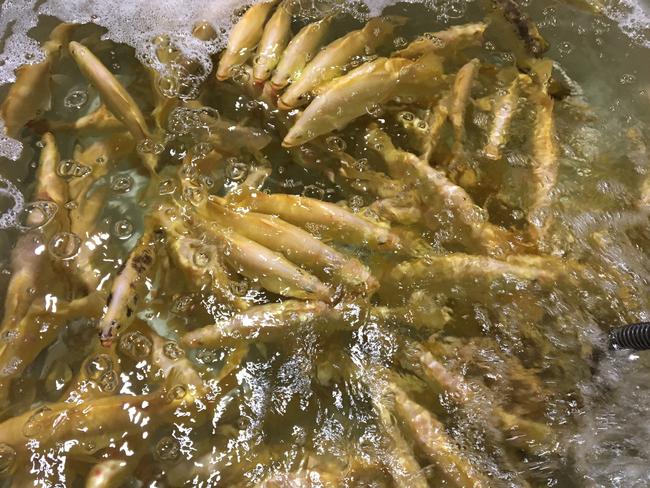James Cook Uni researchers find the genes that make a barramundi golden
James Cook University scientists are getting closer to finding the secret of turning the grey old barramundi fish we all love into gold.

Aussies love the barramundi and, in the interests of a great culinary experience, are willing to overlook the pallid grey colour of the fish’s flesh.
But every so often in the wild, a barramundi is caught which is a golden colour and the rare golden barra is far more popular in Asian countries than the regular barra which is revered in Australia.
Unlike the barramundi we are familiar with, the golden barra has lighter, whiter flesh that looks more attractive and works particularly well for the sashimi market.
Now scientists are honing in on what gives this unusual variation of the barramundi its golden colour. If their work makes it easier to breed the golden barra then it will be a valuable addition to Australia’s aquaculture industry.

James Cook University researchers, working with barramundi grower MainStream Aquaculture, have identified the genes which cause the change in pigment. The genese remove black and silver shading in the barramundi’s skin, the researchers say in a paper recently published in the scientific journal Aquaculture.
“Without the black and silver melanin shading in the skin, the other pigment cells that produce yellow and gold colours come through to make the fish look gold,” said Dean Jerry, a co-author of the study who directs the ARC Research Hub for Supercharging Tropical Aquaculture through Genetic Solutions which is based at James Cook University.
“It does not change the eating qualities of the fish – golden barramundi have the same great taste and texture that we know of, but they look more attractive as a fillet to the consumer,” he said.

“One of the things that can put the consumer off a regular barramundi fillet is that when you compare it to, say, an imported Basa catfish fillet from Vietnam, it looks grey which wrongly gives the impression that it isn’t fresh.”
MainStream Aquaculture has large numbers of golden barramundi broodstock in their hatchery. Professor Jerry said that, with the knowledge of which genes are responsible, the research team can identify fish with the desired genetic variation and make it easier to selectively breed them.
Mainstream Aquaculture’s Dr Paul Harrison said his company has built special facilities to breed the golden barra and “unlocking the control process on colour regulation will provide a new barramundi product to consumers”.




To join the conversation, please log in. Don't have an account? Register
Join the conversation, you are commenting as Logout